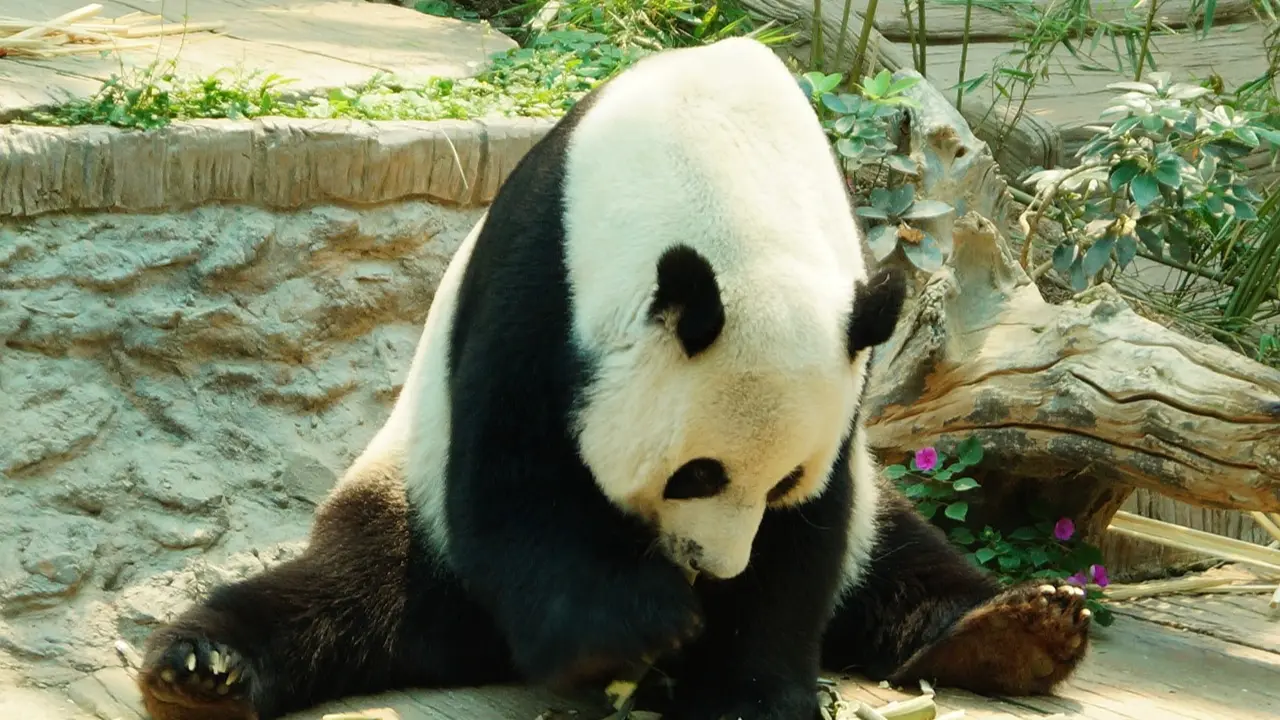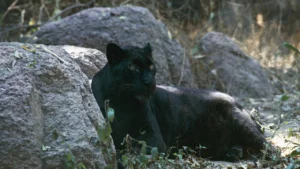Table of Contents
In the lush bamboo forests of China, amidst mist-shrouded mountains, roams one of the world’s most beloved and iconic creatures: the giant panda bear. With its distinctive black-and-white coat, endearing appearance, and gentle demeanor, the giant panda captures the hearts of people around the globe. In 2024, as conservation efforts continue to safeguard this endangered species, the giant panda stands as a symbol of hope, resilience, and the power of collective action. In this comprehensive exploration, we delve into the fascinating world of giant pandas, unraveling their mysteries, celebrating their uniqueness, and advocating for their protection in an ever-changing world.
Introduction to Giant Pandas Bear: Guardians of the Bamboo Forests
The giant panda (Ailuropoda melanoleuca) is a species of bear native to the mountainous regions of central China, where it inhabits dense bamboo forests at elevations between 5,000 and 10,000 feet (1,500 and 3,000 meters). Renowned for its striking black-and-white fur, rounded face, and distinctive markings, the giant panda is instantly recognizable and universally adored. Despite its bear-like appearance, the giant panda belongs to the family Ursidae but exhibits several unique adaptations that set it apart from other bears, including its specialized diet of bamboo and its arboreal lifestyle.
Physical Characteristics: Anatomy of a Bamboo Connoisseur
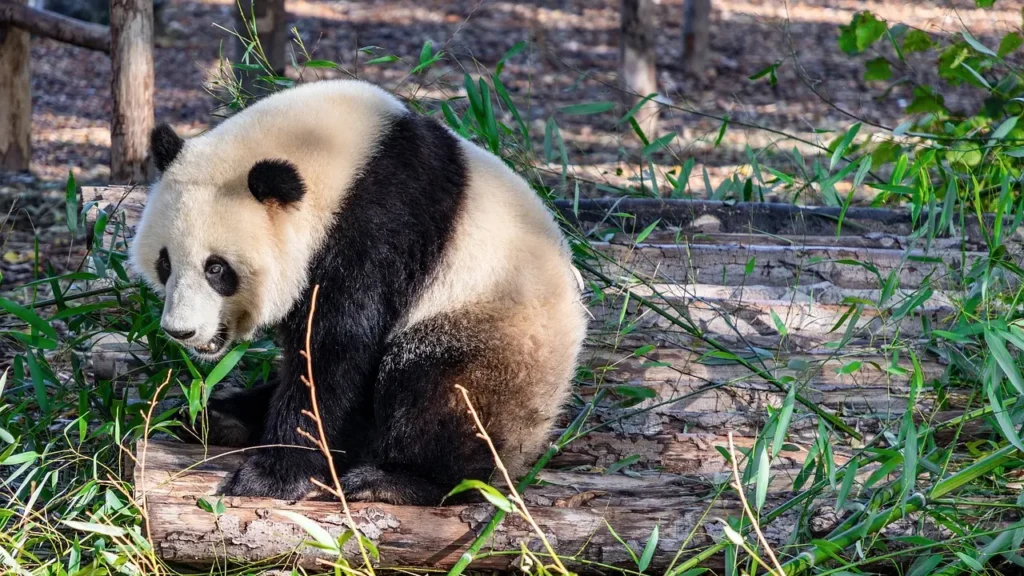
Giant pandas possess a unique set of physical traits that reflect their specialized diet and habitat preferences. With a body length ranging from 4 to 6 feet (1.2 to 1.8 meters) and a weight of up to 330 pounds (150 kilograms), giant pandas are relatively small compared to other bear species. Their stout bodies are covered in thick, woolly fur that provides insulation against the cold mountain air, while their large, round heads and expressive faces endear them to people of all ages. Giant pandas have five clawed digits on each paw, including a specialized “thumb” that enables them to grasp and manipulate bamboo with remarkable dexterity—a skill that is essential for their survival in the bamboo forests.
Habitat And Distribution: Bamboo Havens in the Mountains
Giant pandas are found in a few isolated mountain ranges in central China, where they inhabit dense bamboo forests and coniferous woodlands. These forests are characterized by cool, moist climates with dense vegetation and steep, rugged terrain, providing giant pandas with ample cover and a reliable food source. While their historical range once extended throughout much of China, giant panda bear are now confined to fragmented habitats in Sichuan, Shaanxi, and Gansu provinces, where they face increasing threats from habitat loss, fragmentation, and human encroachment.
Diet and Feeding Behavior: Masters of Bamboo Cuisine
Giant panda bear are famously specialized feeders, with bamboo comprising the majority of their diet. Despite their carnivorous ancestry, giant panda bear have evolved to subsist almost exclusively on bamboo a diet that is both low in nutrients and difficult to digest. To compensate for this dietary limitation, giant pandas consume large quantities of bamboo each day, relying on their powerful jaws and specialized teeth to break down tough bamboo stalks and extract the nutritious inner tissue. They are also known to supplement their diet with small amounts of other plant matter, including fruits, leaves, and occasionally small mammals or birds.
Reproduction And Life Cycle: Nurturing the Next Generation
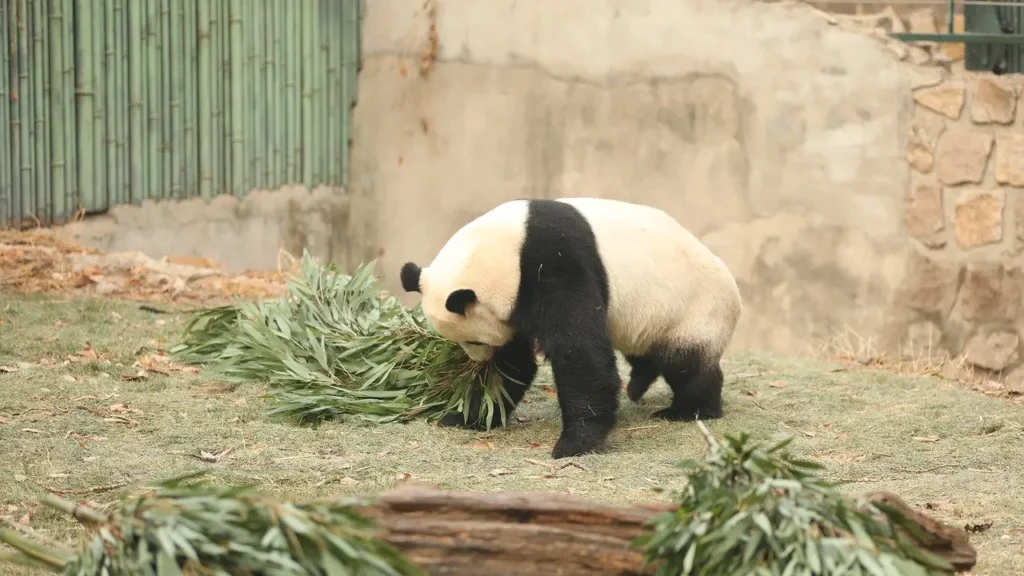
Breeding and reproduction play a crucial role in the survival of giant panda bear populations, which face numerous challenges due to their low reproductive rates and limited habitat availability. Female giant pandas typically reach sexual maturity between the ages of four and six years, after which they enter into estrus, or heat, for a brief period each year.
Mating typically occurs between March and May, during which time males compete for access to receptive females. Female giant pandas give birth to one or two cubs after a gestation period of approximately five months, with births typically occurring between August and September. Giant panda cubs are born blind, hairless, and entirely dependent on their mother for care and nourishment, remaining with her in the den for the first few months of life before venturing out into the forest.
Conservation Status: Safeguarding a Global Treasure
Giant pandas are classified as an endangered species by the International Union for Conservation of Nature (IUCN), with an estimated population of fewer than 2,000 individuals remaining in the wild. Despite significant conservation efforts in recent decades, giant pandas continue to face threats from habitat loss, fragmentation, poaching, and climate change, which jeopardize their long-term survival. In response to these threats, conservation organizations, government agencies, and local communities are working tirelessly to protect and restore giant panda bear habitats, implement anti-poaching measures, and raise awareness of the importance of panda conservation. Through habitat preservation, captive breeding programs, and community-based initiatives, we can ensure a brighter future for giant pandas and the ecosystems they inhabit.
Cultural Significance: Giant Panda Bear in Art, Mythology, and Conservation
Giant panda bear hold a special place in the hearts and minds of people around the world, serving as symbols of conservation, diplomacy, and global cooperation. Revered for their gentle nature, playful demeanor, and unmistakable appearance, giant pandas have inspired artists, writers, and conservationists for centuries. Their image adorns flags, postage stamps, and cultural artifacts, symbolizing the beauty and diversity of the natural world and the importance of protecting endangered species. Giant pandas have also played a prominent role in international diplomacy, with China loaning pandas to zoos and wildlife parks around the world as a gesture of friendship and goodwill—a practice that has helped to raise awareness of panda conservation efforts on a global scale.
Encounters in the Wild: Experiences and Insights from Observers
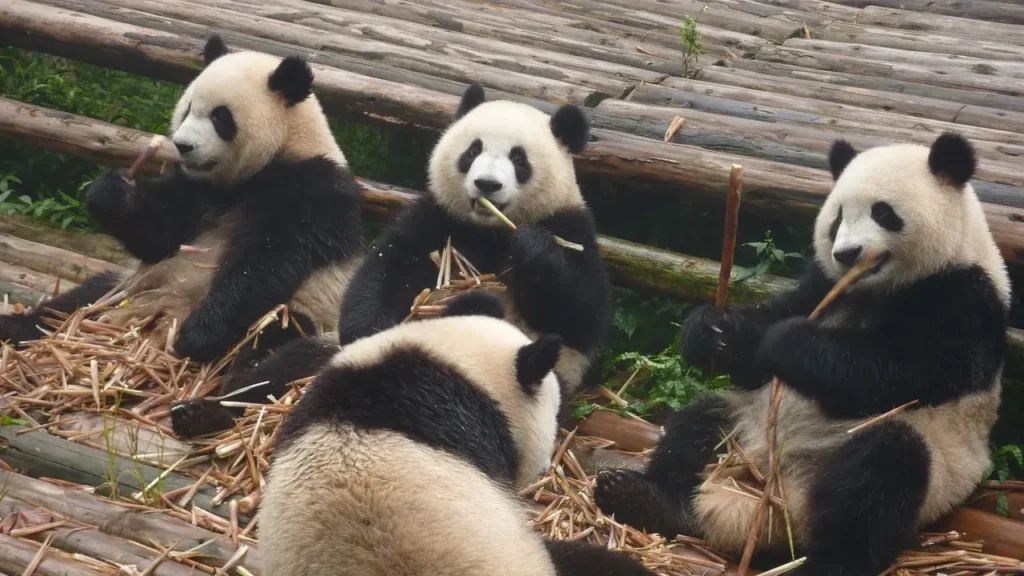
For those fortunate enough to encounter giant pandas in the wild, the experience is often one of wonder, awe, and reverence. Whether glimpsed from a distance as they forage in the bamboo forests or observed up close in protected reserves and sanctuaries, the sight of giant pandas in their natural habitat is a rare and unforgettable privilege. Wildlife enthusiasts, researchers, and conservationists devote countless hours to studying and monitoring giant panda populations, gathering valuable data on their behavior, ecology, and habitat requirements. Through their efforts, we gain insights into the challenges facing giant pandas and the measures needed to ensure their long-term survival.
Conclusion: Guardians of the Bamboo Forests
In conclusion, giant pandas bears are more than just charismatic icons of conservation; they are guardians of the bamboo forests, symbols of hope, and ambassadors for the natural world. As we continue to explore and appreciate the wonders of the Earth, let us remember the importance of protecting and conserving species like the giant panda bear, whose survival depends on our collective efforts.
By working together to address the threats facing giant panda populations and their habitats, we can ensure a brighter future for these beloved creatures and the ecosystems they call home. Whether roaming the misty mountains of China or inspiring awe in people around the world, giant pandas remind us of the beauty and fragility of life on Earth and the responsibility we all share to protect it.

